The 2024 Nobel Prize in Physics was awarded to John J. Hopfield and Geoffrey E. Hinton for their pioneering contributions to artificial neural networks. Their research has fundamentally transformed artificial intelligence (AI) by enabling machines to process data, learn autonomously, and make decisions. This article explores their discoveries, the impact on AI, and what the future holds for the field.
Key Discoveries: They trained artificial neural networks using physics
John J. Hopfield is renowned for developing the Hopfield Network, a form of recurrent neural network that can store information and retrieve patterns, similar to human associative memory. This breakthrough linked neural networks to statistical physics, allowing complex systems to find stable solutions, which improved AI’s ability to recognize and reconstruct patterns, making his work influential in fields like image and speech recognition.
Geoffrey E. Hinton, regarded as a founding father of deep learning, revolutionized machine learning through his work on backpropagation, an algorithm that allows neural networks to adjust their internal parameters based on errors. This method was a key breakthrough for improving AI performance in recognizing patterns and learning from data. His contributions also extend to the development of transformer architectures, used today in AI language models, propelling advancements in natural language processing (NLP).
Why Their Work Matters
Hopfield and Hinton’s innovations turned neural networks from theoretical models into practical tools. Neural networks now power digital assistants, image and speech recognition software, and advanced AI applications in healthcare, finance, and beyond. These systems learn autonomously, making decisions without human programming, which has accelerated developments in machine learning and deep learning.
Their work illustrates how physics and AI can intersect. Both scientists applied statistical physics to optimize the behavior of neural networks, pushing AI beyond its previous limitations.
Broader Impacts
Hopfield and Hinton’s discoveries have spread across industries:
- Healthcare: AI systems use neural networks to interpret medical images, aiding in diagnosis and personalized treatment plans.
- Autonomous Vehicles: AI enables real-time decision-making, processing vast amounts of data to improve safety and navigation.
- Finance: AI predicts market trends and automates trading strategies with high accuracy.
- Entertainment: AI enhances user experiences in video games, streaming platforms, and creative content generation.
These breakthroughs allow machines to tackle increasingly complex tasks, mimicking human thought processes in decision-making.
What’s Next for AI?
As AI continues to evolve, several key areas will shape its future:
1. Scaling AI for Complex Tasks
Today’s AI excels at specific tasks like image recognition or translation, but the next step is generalized AI—systems capable of handling diverse tasks with minimal human input. Hinton’s deep learning techniques and Hopfield’s associative models will be instrumental in creating AI that can process complex, dynamic data like human behavior and economic systems, opening up new predictive capabilities for AI in fields like decision-making and personalized services.
2. Advances in NLP
Hinton’s work on NLP has led to significant improvements in AI’s understanding of language. Future advancements will create AI systems capable of understanding context, nuance, and even emotion in language, transforming industries that rely heavily on human-computer interaction. Fields like customer service, healthcare, and education will see a surge in AI-driven communication tools that can empathize and interact more naturally.
3. Neuroscience and AI Convergence
The future of AI may be found in its growing convergence with neuroscience. AI models inspired by brain functions, like Hopfield’s memory models and Hinton’s adaptive learning, could lead to brain-like AI systems capable of more nuanced decision-making and learning. This could revolutionize fields like mental health by creating AI simulations that adapt and learn from interactions, helping users through personalized support.
4. Ethical AI and Responsible Development
As AI becomes more powerful, there is increasing concern about its ethical use. Both Hopfield and Hinton have advocated for responsible AI development. Ensuring fairness, transparency, and privacy in AI decision-making will be critical, especially as systems become more autonomous. Future advancements will need global governance frameworks to regulate AI’s impact on employment, privacy, and social equality.
5. AI for Science and Discovery
AI is already a critical tool in scientific discovery, particularly in fields like drug discovery, genomics, and climate science. The next generation of neural networks could help scientists analyze vast amounts of data, identifying patterns that lead to breakthroughs in physics, biology, and environmental science. AI’s role in science will evolve from being a tool to becoming a collaborator.
6. AI’s Role in Sustainability
As climate change intensifies, AI could play a vital role in optimizing resource use, reducing waste, and improving energy efficiency. Hopfield and Hinton’s neural networks are foundational to AI systems capable of real-time environmental monitoring. These systems could predict climate shifts and offer solutions to mitigate their effects, advancing sustainability efforts across industries.
A Future Shaped by AI
The Nobel-winning discoveries of John J. Hopfield and Geoffrey E. Hinton have not only advanced AI but also laid the groundwork for the next wave of technological innovations. In the coming decade, AI will likely be integrated into every aspect of human life, from healthcare and education to finance and entertainment. As AI capabilities continue to expand, so too will the opportunities—and challenges—they bring.
Their work opens the door to a future where AI becomes a crucial partner in addressing some of humanity’s most pressing challenges, from climate change to global health and beyond. The advances made possible by Hopfield and Hinton ensure that AI will not only continue to evolve but will also push the boundaries of what technology can achieve, transforming the future of society and science.
In essence, the contributions of these two Nobel laureates mark the beginning of a new era for AI—a future where machines not only augment human capabilities but also collaborate with us to solve problems once thought insurmountable.
Nobel Press Release:
https://www.nobelprize.org/prizes/physics/2024/press-release/
. Related articles .
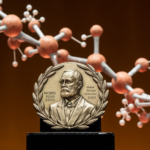 Nobel Prize in Chemistry Awarded for AI Breakthrough in Protein Research
Nobel Prize in Chemistry Awarded for AI Breakthrough in Protein Research
 The AI World Index: A Vital Tool for Navigating the Global AI Landscape
The AI World Index: A Vital Tool for Navigating the Global AI Landscape
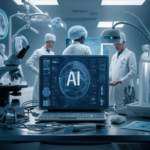 The Role of AI in Medical Diagnostics
The Role of AI in Medical Diagnostics
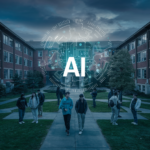 The Future of AI Education: Preparing the Next Generation of Innovators
The Future of AI Education: Preparing the Next Generation of Innovators
 Can AI Bring Down the Price of Oil? A Macro-Economic Perspective
Can AI Bring Down the Price of Oil? A Macro-Economic Perspective
 Book Review: Nexus: Where History, Technology, and the Future of Humanity Converge
Book Review: Nexus: Where History, Technology, and the Future of Humanity Converge
 Hurricane Milton Prepares for Impact: Can AI Revolutionize Storm Forecasting and Save Lives?
Hurricane Milton Prepares for Impact: Can AI Revolutionize Storm Forecasting and Save Lives?
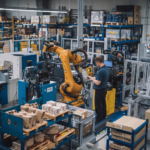 The Automation Paradox: Could AI Be Slowing Its Own Growth?
The Automation Paradox: Could AI Be Slowing Its Own Growth?
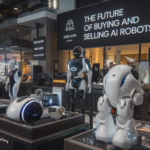 The Future of Buying and Selling AI Robots: A Market Like Cars?
The Future of Buying and Selling AI Robots: A Market Like Cars?
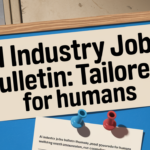 AI Industry Jobs Bulletin: Tailored for Humans
AI Industry Jobs Bulletin: Tailored for Humans